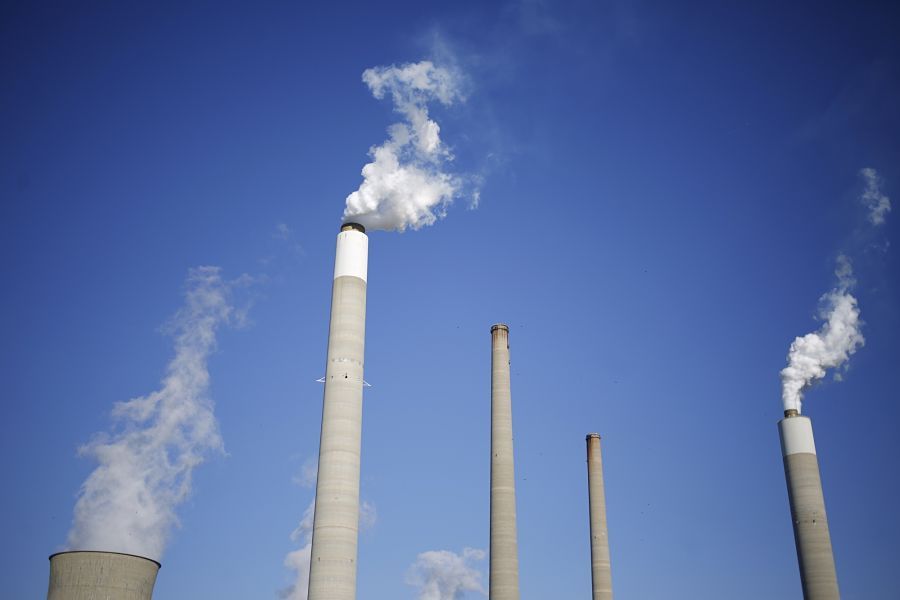Polluters trying to go green have been tipped by analysts and fund managers as the next companies that could attract billions of dollars worth of ESG inflows.
Bank of America believes the best prospects include reforming firms that are currently high carbon-dioxide emitters in the energy, metals and mining industries. Newton Investment Management favors companies looking to dispose of coal assets and switch to sustainable energy.
The Biden administration’s commitment to the environment and the European Union’s green stimulus plan are spurring demand for more responsible investing as the world recovers from the Covid pandemic. About 86% of investors say climate change will be at the center of their policy or a major factor in the next two years, up from 33% two years ago, a Robeco survey has found.
The surge in ESG assets in the past year has pushed valuations into the stratosphere. The MSCI World ESG Leaders Index, which tracks more than 700 stocks screened for high environmental, social and governance criteria, has jumped about 80% from its March 2020 low to a series of record highs. Its price-to-earnings ratio is up to 30.4, from just 14 in March last year.
The Bloomberg Barclays MSCI Global Green Bond Index, which is based on more than 600 ESG-compliant bonds, has jumped 11% in the past year, defying a selloff in global debt markets.
“Over the last 12 months, market returns have been very, very compelling,” said Arian Neiron, managing director and head of Asia Pacific in Sydney at VanEck, which oversees $50 billion globally. “They’ve tapered off a bit with the technology complex and with the long end of the curve going off. We think it’s an entry point, particularly in clean energy. ESG is going to be standard.”
VanEck favors companies that offer home-energy solutions such as Enphase Energy Inc., wind-turbine manufacturers like Vestas Wind Systems A/S, and Verbund AG, a producer of hydropower. The money manager began a clean energy exchange-traded fund in Australia in March to take advantage of increasing demand.
‘DECADE OF OPPORTUNITY’
Bank of America also sees potential in firms moving toward climate improvement in the chemical, fertilizer and paint industries.
Companies that have set near-term emission reduction targets are more appealing because they have an action plan and are undergoing change now, said Sameer Chopra, head of Asia ESG research at Bank of America in Sydney.
[More: AB strategy invests in ESG improvers]
Chopra said concerns about expensive valuations are premature. “Is it a bubble? No, not really. It seems like a lot because it’s come off a very small base, you are doing big numbers off a small base, but it’s very early and we think this is another decade of opportunity to grow.”
Other money managers are more wary following the run up in prices.
“As ESG demand grows, investors may need to be more mindful of the potential clustering risk around the ESG trade,” said Guillaume Mascotto, head of ESG and investment stewardship at American Century Investments in New York. “While these ESG-friendly assets have significant potential in the longer term, we believe caution is warranted.”
The Newton Sustainable Global Equity Fund favors companies that have a clear plan to transition their businesses to accommodate the changing world, even if they are not necessarily at the vanguard of ESG.
These may include utilities that are trying to get rid of coal assets and shift to renewables, as well as air-conditioning companies that are developing technologies to produce more efficient units, said Yuko Takano, who manages the fund in London.
“We want to dig a little bit deeper into the less obvious areas where there is some element of technology innovation going that is not necessarily a focal area for most investors but we find to be quite interesting,” Takano said.
GREEN BONDS
The surge in ESG assets is not just moving stocks, it is also being felt in fixed income.
Issuance of so-called green bonds, which raise funds for projects that deliver environmental benefits, jumped to $111 billion in the first quarter, nearly three times a year earlier, according to Calvert Research and Management in Washington.
“The pandemic has heightened the awareness of environmental, social and governance factors as drivers of social responsibility and impact, as well as financial performance — turning 2020 into a pivotal year for responsible investing, especially in fixed income,” Brian S. Ellis, fixed-income portfolio manager and Henry Mason, ESG research associate, wrote in a note.
In the first quarter, Calvert invested in a U.S. electric-power producer whose parent company is the first U.S. utility to commit to being carbon neutral by 2050. It also bought a holding in a semiconductor producer whose parent has become the first South Korean company to commit to transitioning to 100% renewable energy.








